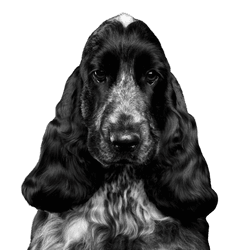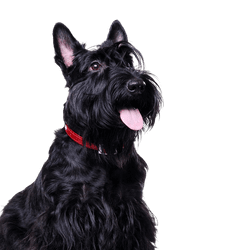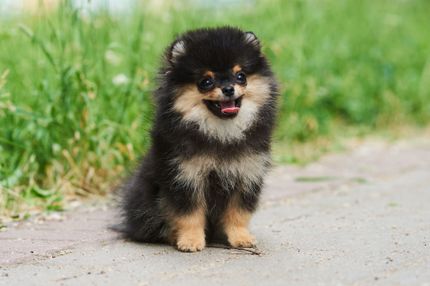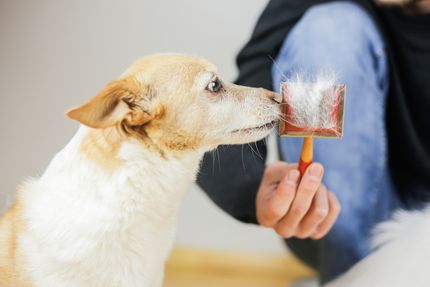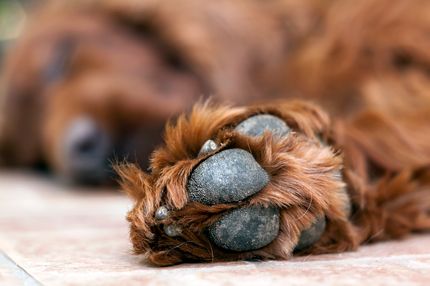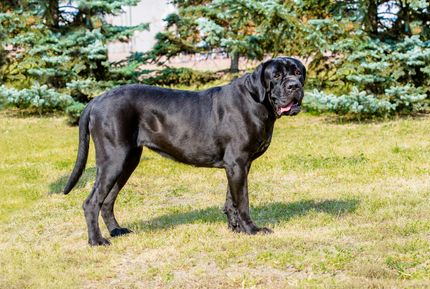Facts & Origin
Scottish Cocker - The perfect mix of Cocker Spaniel and Scottish Terrier.
The Scottish Cocker is a fascinating cross between the Cocker Spaniel and the Scottish Terrier. Both breeds have a rich history and bring different characteristics to the mix.
Uses and Suitability
Overall, the Scottish Cocker is in charming and lovable companion that delights with its unique appearance and friendly nature. With proper care, training and veterinary attention, he can live a happy and healthy life.
| Alternate Name | - |
| Origin | England - Scotland |
| Life expectancy | 10 - 17 years |
| Care requirements | high-maintenance |
| Activity level | average |
| FCI group | not recognised |
| AKC group | not recognised |
| KC group | not recognised |
More Cocker Spaniel mixes
More Scottish terrier mixes
Attitude, character and temperament of the breed
Possible character traits of the Scottish Cocker
The Scottish Cocker is a lively and affectionate dog that makes a good family pet. He is known for his friendly and adaptable nature. The Scottish Cocker can adapt well to different living conditions, whether in an apartment or in the country. He is usually a good playmate for children and often gets along well with other pets.
The Scottish Cocker is likely to exhibit some positive character traits of both parent breeds. These might include:
- Friendliness and playfulness
- Adaptability and liveliness
- Loyalty and affection
- Intelligence and willingness to learn
It is important to note that each dog's character is individual and influenced by various factors such as socialization and environment.
Character
Care and health maintenance
As with all dogs, certain health problems can occur in the Scottish Cocker. It is important to note that both parent breeds have certain genetic susceptibilities. Potential health problems in the Scottish Cocker can include ear infections, eye problems, and hip dysplasia. Regular veterinary examinations and a healthy diet are critical to promoting the Scottish Cocker's health.
Grooming the Scottish Cocker requires regular attention. The coat is often dense, silky and may be wavy or curly. It should be brushed regularly to prevent tangles and matting. In addition, regular cleaning of the ears is important to prevent infection. Claws should be trimmed as needed and teeth should be cleaned regularly.
What does this mixed breed look like?
The appearance of a Scottish Cocker can vary from dog to dog, as it has characteristics of both parent breeds. However, it is usually a medium-sized dog with an athletic build. The coat can be a variety of colors, including black, brown, red, or a combination thereof. The Scottish Cocker often has a charming face with dark eyes and drooping ears.
| Fur length | medium - long |
| Fur | wavy - flat coated |
| Ear shape | Floppy Ear - Standing Ears |
| Tail | fanned out - short |
| Anatomy | dainty, muscular, rugged, square |
| Size ♀ | 23 - 41 cm |
| Weight ♀ | 7 - 15 kg |
| Size ♂ | 25 - 43 cm |
| Weight ♂ | 8 - 16 kg |
| Suitable For | - |
Known Diseases
Epilepsy
Definition: Dog has epilepsy if, for example, at least two epileptic seizures occur more than 24 hours apart.
Progressive Retinal Atrophy (PRA)
Progressive retinal atrophy (PRA) is a slowly progressive death of the retina in dogs.
Cancer
May be common in older dogs.
FAQ
-
Cocker Spaniel-Scottish Terrier mixes are very lively, playful, friendly and affectionate. They are also described as entertaining and pleasant.
-
Yes, these mixed breeds are considered very social (and appropriately playful) all-around pets.
-
On average, Cocker Spaniel-Scottish Terrier mixes grow between 24 and 28 inches tall and weigh between 10 and 15 kilograms.
-
Yes, this hybrid breed requires at least an hour of exercise daily to stay physically and mentally stimulated.
